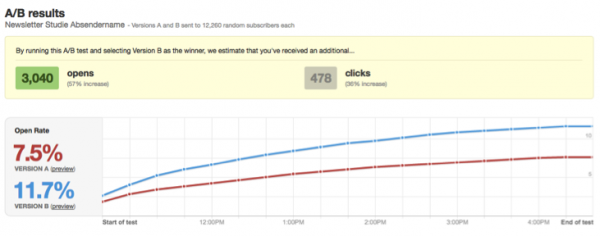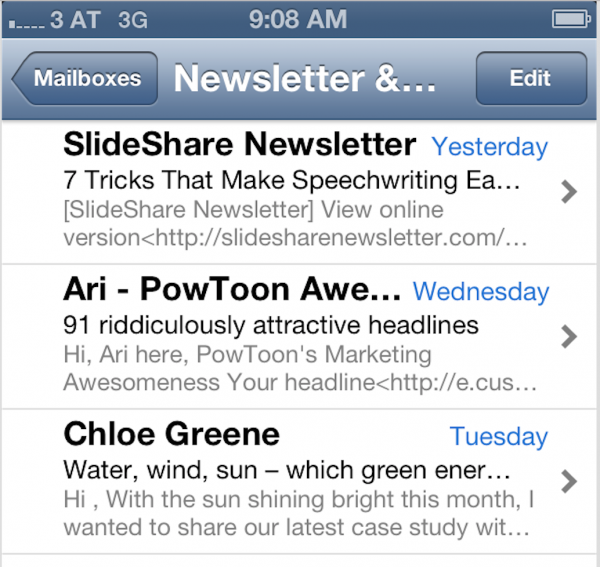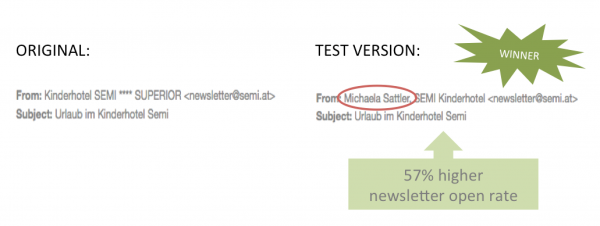Case Study: 57% Increase in Newsletter Open Rate with a Tiny Change to the Sender Name

May 3, 2015
On a recent project, a tiny change helped us achieve an all-time high in newsletter open rates. The optimization tweak was done on an element whose impact is often under-estimated: the sender name (also called “from name“).
It all started when we were approached by the marketing team of a family hotel, the SEMI Superior **** Kinderhotel. They were looking for simple techniques to improve the efficiency of their email marketing campaigns.
The hotel guests particularly appreciate the family atmosphere of this hotel and the personal and caring support of the host family. We decided to take advantage of this fact and use this insight for a small test: but before we get into the details of our “Michaela“ test, here is a little more info about why sender names are important.
Sender name: a crucial selection criterion to ensure your email does not go straight to the trash
Many users quickly screen their incoming emails. Whether it is early in the morning at breakfast, or on the way to the office, in the subway or while taking a break at work, emails are judged quickly. Those that seem irrelevant quickly disappear in the trash, unread.
In an attempt to make sure emails survive this filtering process, subject-line testing is frequently used. Sender name optimization, on the contrary, does not often receive a lot of attention and its power is usually under-estimated. This is a shame because sender name is a crucial filter criterion, especially on mobile devices, where it can be a more powerful motivator to open an email than the subject line.
Bigger and bolder: why sender names are even more important on smartphones
On smartphones, such as the iPhone, the sender name is displayed more prominently (bigger and bolder) than the subject line of your message. That’s why it receives more attention and, within the blink of an eye, can be the deciding factor in the recipient’s choice to “delete or read“.
Our “Michaela” test: using a personal sender name rather than just the name of the hotel
For our test for the SEMI family hotel we chose a personal sender name in combination with the company name (in this case, the name of the hotel). Since research has shown that the personal care and service of the hosts, the Sattler family, played an important role for hotel guests’ satisfaction we wanted to reflect this in the sender name. Instead of an impersonal “from name“ with just the name of the hotel, we inserted the name of Michaela Sattler, the female head of the host family, in front.
Split testing sender names
Split testing is a method of conducting controlled, randomized experiments. It can be used to test everything from websites to newsletters to search ads. Incoming traffic is distributed evenly between the original (control) and the variation(s). The results of such a test determine which version shows the greatest improvement.
Most email marketing tools allow you to set up sender name tests within seconds.
How it works:
In this case, the original email (also called the control or version A) and the test variant (version B) were each sent to more than 10,000 newsletter subscribers. During the testing period, version B showed statistically significant better performance. That’s why the remaining newsletters were subsequently sent out using the winning sender name from version B.

After a few hours it was clear, the our “Michaela version” (blue line, version B) showed a 57% higher open rate than version A (red line).
Caution:
a personal sender name might not make sense for every type of business
Unfortunately “THE” perfect sender name does not exist. What works depends on your specific target group and offering. The only way to find out what works for you is to run a few tests and see how your open and click rates are affected.
As our example shows, testing pays off and changing a few letters can hugely improve the efficiency of email marketing campaigns.

